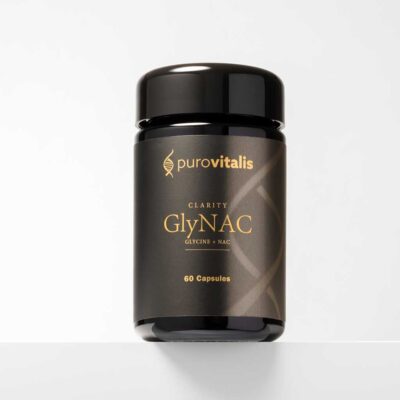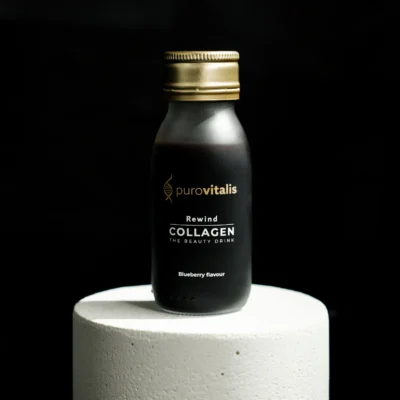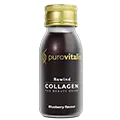
Glycine is the smallest amino acid, but it plays a big role in your body. It’s essential for collagen production, keeping skin firm and joints flexible, and it acts as a neurotransmitter that supports sleep, mental clarity, and healthy aging. Although your body makes some glycine, it’s important to get enough through your diet to maintain optimal levels. This blog will cover the best glycine sources, how much you need, and why supplements can help.
Glycine requirements
There’s no official daily recommendation for glycine, but newer studies suggest aiming for around 10 grams per day to support good health[1]. The body can produce approximately 3 grams on its own, primarily in the liver through synthesis from the amino acid serine. However, to fully support collagen production and other essential functions, it’s important to reach higher levels through glycine rich foods or supplements.
Certain groups may need even more glycine, including pregnant or breastfeeding women, athletes with high physical demands, and individuals recovering from injury or surgery. In such cases, increasing glycine intake through both food and supplements can help meet the body’s heightened requirements.
For more detailed insights on Glycine, read more here: The amino acid glycine
Top 5 food sources of glycine
Looking to add more glycine rich foods to your meals but not sure where to start? Here’s a list of the best glycine sources that can help you boost your intake while also delivering plenty of other health benefits.
1. Bone broth
Bone broth is a nutrient-rich option that delivers a concentrated dose of glycine. The high content of glycine in bone broth comes from simmering animal bones and connective tissues for hours, breaking down collagen and releasing loads of glycine. Packed with minerals like calcium and magnesium, it’s more than just a soup—it’s a nourishing boost for your body.
TIP | For an extra flavor boost and added nutrients, try adding mushrooms and a bit of miso paste to your gycine-rich bone broth. The miso gives the broth a deep, umami taste, while the mushrooms enhance the richness and provide extra minerals. Let it simmer together for a few more minutes before serving to let the flavors meld.
2. Chicken skin and cartilage
Chicken skin and cartilage are loaded with glycine thanks to their collagen content. While cartilage is often trimmed off and discarded, it can actually be used to make flavorful broths and soups, adding a nutrient boost to your dishes. As for chicken skin, you can make it crispy and delicious by seasoning it well and roasting or frying it to perfection. Not only does it lock in flavor, but it also gives you a hefty dose of glycine. While it’s higher in fat, enjoying it occasionally can be a tasty way to up your intake.
TIP | Roast chicken skin with your favorite spices until it’s golden and crispy. Use cartilage to make homemade chicken broth or add it to soups for an extra collagen boost. For a complete meal, sauté your favorite vegetables in the homemade broth to infuse them with rich flavor and added nutrients.
3. Beef and pork connective tissue cuts
Cuts like brisket, short ribs, and pork belly are rich in glycine because they contain a lot of connective tissue, such as tendons, cartilage, and ligaments. These parts are high in collagen, which breaks down into gelatin and glycine during slow cooking. Taking the time to cook these cuts low and slow makes the meat tender and the glycine more digestible and bioavailable. Just balance it out by choosing leaner cuts when you can.
TIP | Try slow-cooking brisket or pork belly with a blend of onions, garlic, and herbs. Add a splash of vinegar to help break down the collagen even more, and let it simmer for several hours. Serve with roasted root vegetables or a fresh green salad for a hearty and balanced meal.
4. Fish skin and scales
Fish like salmon and mackerel are not only high in omega-3s but also great sources of glycine—especially in the skin and scales. Grilling or baking fish with the skin on keeps the glycine intact and adds a nice crispy texture. Plus, you get a dose of healthy fats to support heart and brain health.
TIP | Grill or pan-sear fish like salmon with the skin on to lock in both flavor and glycine. To get the crispiest result, pat the skin dry before cooking and season with salt and a squeeze of lemon. Pair with roasted veggies or a light salad to balance the richness.
5. Egg whites
Eggs are a go-to protein source, and when it comes to glycine content, it’s actually the white part that takes the win compared to the yolk. Whip up omelets, scrambles, or use egg whites in baking for a protein boost without the extra fat and cholesterol.
TIP | Make a spinach omelet with a twist by adding a handful of chopped nuts for a bit of crunch and extra nutrients. To make it even more interesting, toss in some leftovers from last night’s dinner—like roasted veggies or cooked chicken. It’s a great way to reduce food waste while creating a hearty, protein-packed breakfast that keeps you full and satisfied!
Vegetarian glycine sources
While the biggest sources of glycine typically come from animal products, it’s definitely possible to get enough glycine through a vegetarian or vegan diet. There are several plant-based foods that are rich in glycine, and combining different sources can help ensure an adequate intake.
Seeds and nuts | Pumpkin and chia:
Pumpkin seeds and chia seeds contain a moderate amount of glycine, along with healthy fats, fiber, and minerals. They are a good option for vegetarians looking to boost their glycine intake. Sprinkle them over your yoghurt, blend them into smoothies, or make homemade granola for a nutrient-rich snack.
Legumes | Beans and lentils:
Legumes like beans and lentils also contain glycine, although in smaller amounts compared to animal sources. They are packed with protein, fiber, and other essential nutrients. Use them in stews, soups, or salads for a hearty and plant-based source of glycine.
Soy Products | Tofu and tempeh:
Soy products like tofu and tempeh are also worth mentioning, as they contribute a certain amount of glycine while being rich in protein. Marinate and fry tofu or tempeh until crispy, or add them to stir-fries and salads.
Whole grains | Oats and quinoa:
Whole grains like oats and quinoa add to your overall glycine intake. They can easily be incorporated into both breakfast and dinner, making them versatile ingredients in a plant-based diet.
Related: Source of Collagen for Vegetarians
To get the full 10 grams of glycine per day, you would need to consume roughly the following amounts from each source. While animal-based foods generally offer higher glycine content per serving, plant-based options would require significantly larger portions. Here’s an overview of how much you would need from each food source on a daily basis to meet the recommended 10 grams of glycine.
| Food source | Glycine content (grams per 100 g) | Amount needed daily for 10 g glycine |
|---|---|---|
| Bone broth | 3-5 | 200-330 g |
| Chicken skin | 2-3 | 330-500 g |
| Beef (brisket) | 1.5-2 | 500-670 g |
| Pork (ribs) | 1.4-1.9 | 530-710 g |
| Fish (salmon) | 1.0-1.5 | 670-1000 g |
| Egg whites | 0.6 | ~33 egg whites |
| Pumpkin seeds | 0.6 | 1.66 kg |
| Lentils | 0.4 | 2.5 kg |
| Tofu | 0.4 | 2.5 kg |
| Quinoa | 0.2 | 5 kg |
The supplement backup
Although it is possible to get glycine through your diet, as the table above shows, it can be challenging to reach the recommended 10 grams per day—especially if you’re not regularly eating collagen-rich foods like bone broth, connective tissue meats, or an incredible large amount of eggs.
Collagen – a natural glycine source
Collagen is one of the best sources of glycine, as about 33% of collagen consists of this essential amino acid. When you take collagen as a supplement, you automatically get a high dose of glycine along with other beneficial amino acids like proline and hydroxyproline.
At Purovitalis, we recommend our Rewind liquid collagen, which, besides collagen and glycine, is also packed with hyaluronic acid, selenium, anthocyanins, and vitamin C to give you the most optimal support for your skin, joints, and overall vitality. Learn more here.
The importance of getting enough glycine
When you consume glycine, your body will first use it for the most essential functions, such as maintaining protein synthesis and supporting vital processes in the liver and nervous system. Only when these basic needs are met will glycine be used to support collagen synthesis in the body. This is why it’s crucial not to be deficient in glycine, as it can affect collagen production and, therefore, impact skin elasticity, joint strength, and other collagen-dependent functions.
You might also like: Liquid Collagen Benefits, Dosage and Possible Side Effects
References:
- Meléndez-Hevia, E., de Paz-Lugo, P., Cornish-Bowden, A., & Cárdenas, M. L. (2009). A weak link in metabolism: The metabolic capacity for glycine biosynthesis does not satisfy the need for collagen synthesis. Journal of Biosciences, 34(6), 853–872.

GlyNAC – Powerful Cellular Synergy Support glutathione production Fuel cellular energy
Experience the proven synergy of Glycine and N-Acetyl-Cysteïne. Together, they work more effectively than alone to restore glutathione levels, enhance mitochondrial function, and reduce oxidative stress.

Experience the best of Collagen with Purovitalis liquid formula. Try it out!













